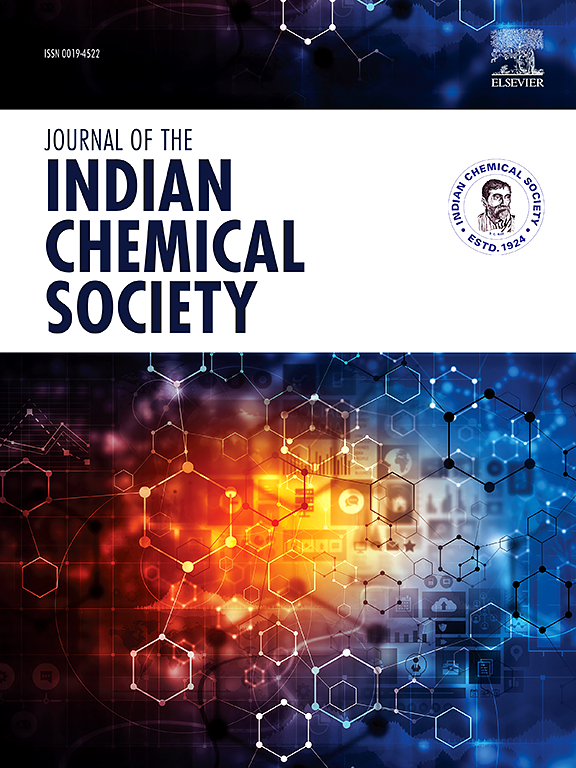Fabricating CuFe2O4 for boosting peroxymonosulfate activation to degrade tetracycline hydrochloride via sol-gel method with the assistance of PEG
IF 3.2
4区 化学
Q2 CHEMISTRY, MULTIDISCIPLINARY
引用次数: 0
Abstract
CuFe2O4, distinguished by its magnetic properties, facilitates swift separation from solution, thereby addressing challenges associated with the recovery, cost, and potential secondary pollution of conventional catalytic materials. In this study, CuFe2O4 was synthesized via the PEG-assisted sol-gel method, aiming to boost the activation of PMS for tetracycline (TC) degradation. Detailed characterization of the catalysts was conducted using XRD and SEM techniques. Furthermore, the study explored the influence of various reaction parameters, such as catalyst dosage, PMS dosage and initial pH, on TC degradation efficiency. The results revealed that the CuFe2O4 catalyst (CFO-20000) prepared by PEG-20000 assisted sol-gel method exhibited uniform and fine particles, a large specific surface area, high magnetism, and low catalytic activation energy. Furthermore, the prepared CFO-20000 material demonstrated superior catalytic performance. With TC concentration of 50 mg L−1, CFO-20000 dosage of 250 mg L−1, an optimal pH of 8, and an ideal PMS concentration of 1.5 mmol L−1 during the catalytic process, an impressive degradation rate of 99.6 % for TC was achieved within just 27 min of catalytic time.

溶胶-凝胶法制备CuFe2O4促进过氧单硫酸盐活化降解盐酸四环素
CuFe2O4以其磁性而著称,有利于从溶液中快速分离,从而解决了传统催化材料在回收、成本和潜在二次污染方面的挑战。本研究采用聚乙二醇辅助溶胶-凝胶法合成CuFe2O4,旨在提高PMS对四环素(TC)降解的活性。采用XRD和SEM技术对催化剂进行了详细表征。进一步探讨了催化剂用量、PMS用量、初始pH等不同反应参数对TC降解效率的影响。结果表明,采用PEG-20000辅助溶胶-凝胶法制备的CuFe2O4催化剂(CFO-20000)具有颗粒均匀细小、比表面积大、磁性强、催化活化能低等特点。此外,制备的CFO-20000材料表现出优异的催化性能。在TC浓度为50 mg L−1,CFO-20000用量为250 mg L−1,最佳pH为8,理想PMS浓度为1.5 mmol L−1的条件下,催化过程中,TC的降解率在27 min内达到了99.6%。
本文章由计算机程序翻译,如有差异,请以英文原文为准。
求助全文
约1分钟内获得全文
求助全文
来源期刊
CiteScore
3.50
自引率
7.70%
发文量
492
审稿时长
3-8 weeks
期刊介绍:
The Journal of the Indian Chemical Society publishes original, fundamental, theorical, experimental research work of highest quality in all areas of chemistry, biochemistry, medicinal chemistry, electrochemistry, agrochemistry, chemical engineering and technology, food chemistry, environmental chemistry, etc.

 求助内容:
求助内容: 应助结果提醒方式:
应助结果提醒方式:


